Paper-thin pancakes that can be salty or sweet, stuffed with cheese or slathered in Nutella, crêpes are one of the most iconic and classic of French foods. In a country that loves to eat but doesn’t really do “to go” foods, they’re also the most authentically French street eats you’ll find – the perfect on-the-go snack or lunch for a busy day filled with sightseeing.

Paris, of course, is brimming with crêpe stands, but if you’re not planning a trip to the City of Lights anytime soon, this handy classic is pretty easy to make at home – and is a great way to add a little pizzazz to your dinner party without spending hours on a complicated recipe. Crêpes also make for a relatively simple lunch or dinner that you can fill with any combination of ingredients.
The Origin
Crêpes originated in the region of Brittany in Northwest France, an area that’s known in particular for its butter and its traditional-style buckwheat crêpes.
Locals here began planting buckwheat in abundance back in the 12th century, as it was one of the few crops able to thrive in the harsh moors with poor quality soil. With such an ample amount buckwheat flour (blé noir in French, meaning “black wheat”), Bretons eventually started rolling out buckwheat crêpes (often called “galettes”) and filling them with delicious meats and cheeses.
In Brittany, locals wash down their galettes with cider, which is usually served in a bowl rather than a glass – so if you order cider at a crêperie and a bowl arrives, it’s not because they ran out of stemware.
The Variations
It depends on who you ask (and what part of France they’re from), but most people recognise two types of crêpes: white flour crêpes and buckwheat flour crêpes (aka galettes). In general, buckwheat flour should be paired with savoury fillings, while white flour crêpes can handle either savoury or sweet options.
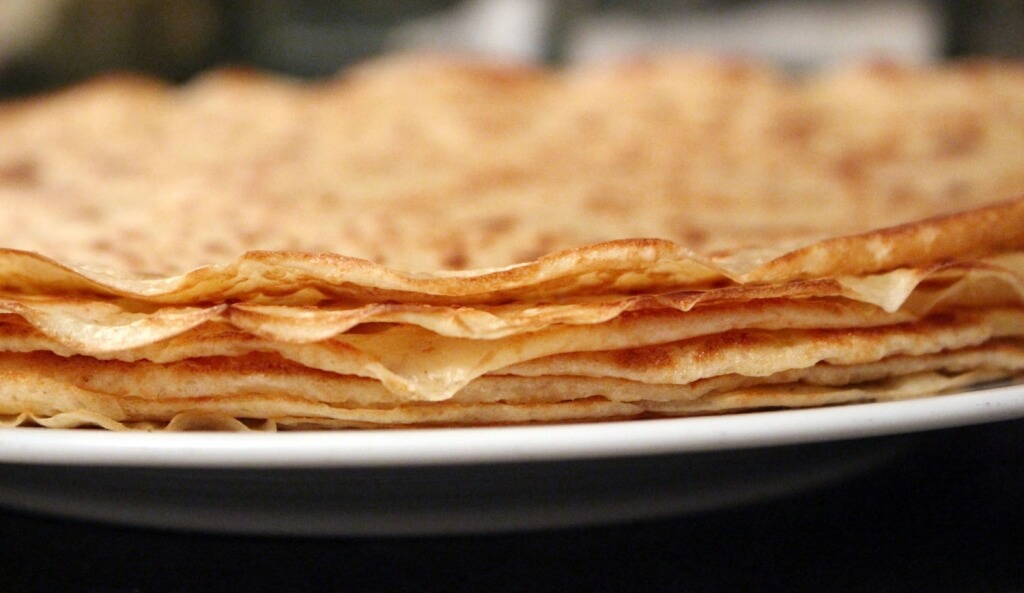
The Ingredients
Traditional buckwheat flour crêpes are typically made by adding just salt, water and egg to the flour, whereas white flour crêpes include eggs, butter and milk, which makes them softer.
Thanks to the wide range of possible fillings, a crêpe can be a lunch or dinner meal just as easily as a snack or dessert. It can be simple, humble and cost you 2 euros at a crêpe stand, or you can visit a specialised crêpe restaurant and get it stuffed with all sorts of fancy fillings.
You can also easily make a crêpe batter at home that can be turned into either a meal or a dessert (or both); one way to do this is to whip up a neutral batter with no sugar in it, so that the fillings determine its final status.
The Flour
The word “buckwheat” is a bit misleading, considering that buckwheat is actually a seed and not a wheat, but this is the main ingredient in classic Brittany-style savoury crêpes. The use of buckwheat flour creates a crêpe that is darker in colour, with a deep, earthy and slightly nutty flavour to complement the fillings.
White flour crêpes showed up in the 20th century, some 800 years after the original buckwheat crêpes became a staple in Brittany. Once white flour became cheaper, this style became the more popular one, since the use of white flour results in a softer, more delicate texture and milder flavour – and also happens to make them a perfect vessel for sweet fillings.
The Savoury Fillings
The most popular classic filling is ham, cheese and a fried egg. You can’t go wrong with that one – though to be fair, making a fried egg in a crêpe at home requires an extra level of skill.
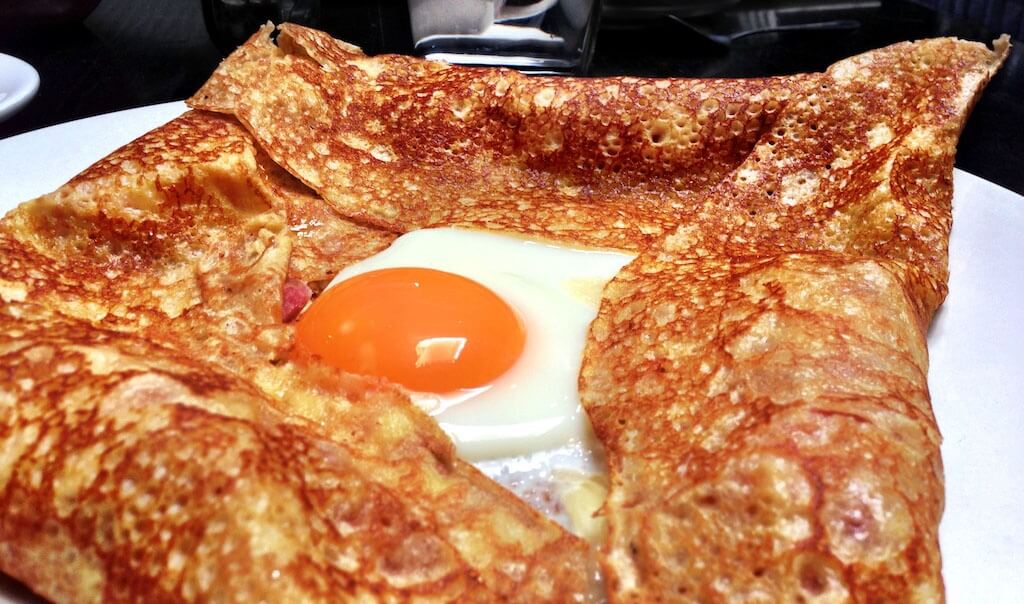
[Photo: Katherine Lim/Flickr]
Other common fillings for savoury crêpes include mushrooms, chicken, artichokes, bell peppers, spinach, cured ham and potatoes. You can even put spring vegetables in there for a light and healthy meal. Cheese is often melted in the crêpe around the fillings, with comté being the most popular variety used in crêpes, and Gruyère and Swiss cheese appearing often as well.
When you order a savoury crêpe at a restaurant in Paris, it will usually be a buckwheat crêpe served like a little open package, with the sides folded in to reveal the centre of fillings. Ideally the centre will have a fried egg right there in the middle – this really adds an extra level of deliciousness.
The Sweet Fillings
When it comes to sweet crêpes, simple is usually better. One of the most popular snack crêpes for visitors in Paris is a Nutella and banana crêpe, while crêpes with just cinnamon and sugar (and butter, of course) are basic but heavenly. I’ve even had a lemon and sugar one that was divine in its simplicity.
Common dessert fillings for crêpes include melted chocolate, fresh or stewed fruits, jams and caramel. Whipped cream and ice cream are often served on crêpes at restaurants (harder to eat on the go, but lovely for a sit-down dessert).
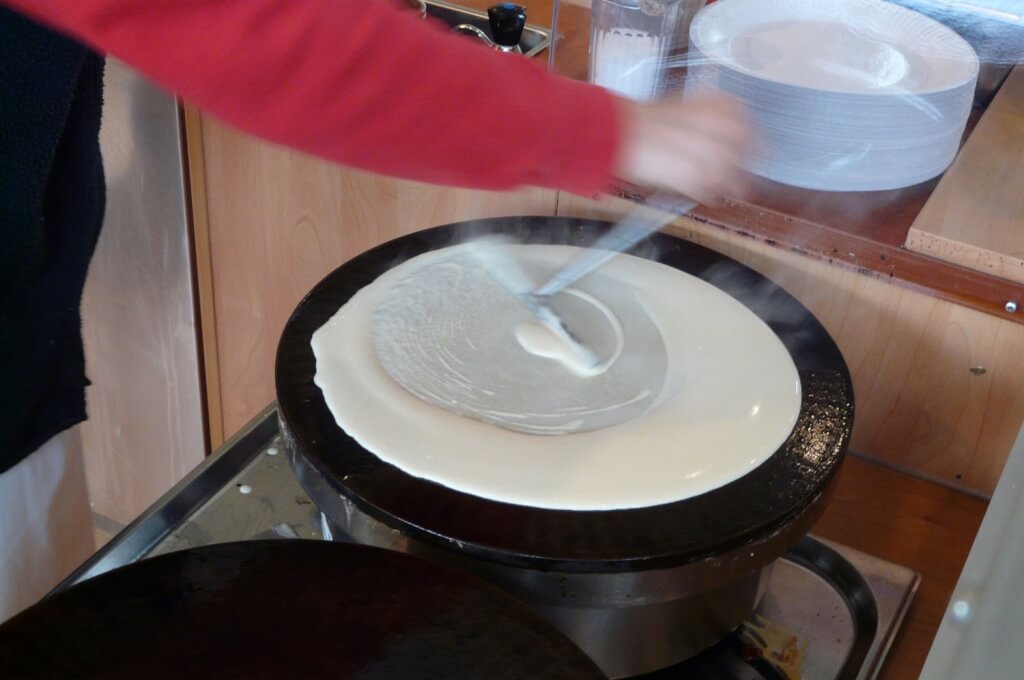
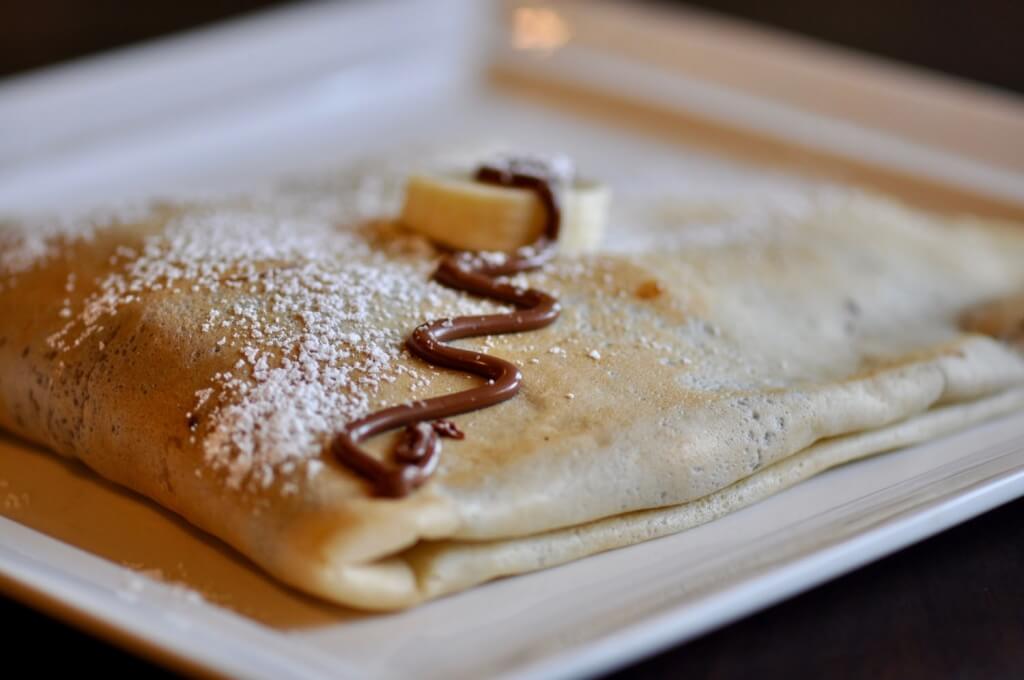
When making crêpes at home, use your imagination: anything sweet you can think to combine as a filling will really do the trick. For presentation and added flavour, it’s nice to sprinkle the top of the crêpe with some powdered sugar once you’ve folded it.
The Method
A crêperie will use a heavy cast iron griddle and a wooden utensil with a T shape at the end, which spreads the batter out as thin as can be in a flat circle. The thinness of crêpes is key, and you must spread the batter quickly. At home, all you really need is a non-stick skillet, a spatula and a little practice.
Make sure your griddle or pan is very hot, then add a thin layer of batter poured into the desired crêpe size. Leave it for a minute or so until it is set. When the bottom is light brown, flip it over and allow the other side to cook. Once you get brave enough, you can flip it in the air and back into the pan, no spatula needed.
If you’re making one crêpe, you can put in the ingredients as soon as you flip the crêpe and allow cheese or Nutella to start melting. Or if you are making several crêpes, you can make them all at once and fill them later, returning them to the pan to melt any ingredients as needed.
For exact measurements of a classic crêpe recipe, as well as tips on flipping an preparing the perfect crêpe at home, take cues from the indomitable Julia Child in this video from her show The French Chef:
Once you try it at home, you’ll be amazed at how easy they are to make. Invite a few friends over, put out a giant spread of filling options and make a fun dessert party out of it. Go crazy!
Article by Julie Neis










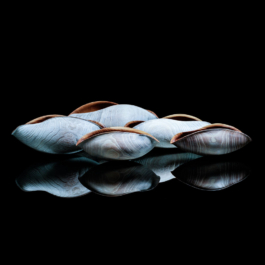



Sorry, the comment form is closed at this time.